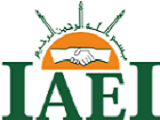The Analysis of Capacity Utilization Production as a Basis for Review Corporate Strategy According Islamic Economics
Abstract
Capacity utilization is important in manufacturing strategies, especially in make-to-order manufacturing strategies. It is used to measure the best production achievements. The parameters for achieving the best production can be measured by reaching the break-even point, namely the point at which the costs are equal to income. In 2022 the capacity utilization production of PT XYZ which is a precast concrete industrial corporation in Indonesia is 73.40% and under the break-even point. Achieving utilization above the break-even point is a competitive advantage for the corporation. This research was conducted to examine the company's current strategy to provide suggestions for formulating corporate management strategies according to Islamic economics with the analysis of capacity utilization production. Meanwhile, the research sample was conducted and analyzed from 2015 to 2026. The method used in this research is quantitative descriptive research, analysis using different statistical tests to analyze capacity utilization, and qualitative descriptive analysis methods to observe corporate strategy. The analysis found that the capacity utilization level in 2016 and 2017 and the prognosis for 2023 exceeded the break-even point. However, from 2024 to 2026, the results of the capacity utilization level will be below the break-even point. So, it is necessary to consider strategy formulation to avoid losses. Some of the suggestions for formulating corporate strategies result are diversification of business unit strategies into the construction sector, corporate synergy, partnerships with strategic partners, and market penetration according to Islamic economics.
Keywords
Full Text:
PDFReferences
Assauri, S. (2008). Production and Operations Management (4th Edition). Publishing Assauri, S. (2008). Manajemen Produksi dan Operasi (Edisi 4). Lembaga Penerbit Fakultas Ekonomi Universitas Indonesia.
Barney, J. B. (2007). Gaining and Sustaining Competitive Advantage (3 edition). Pearson Hall.
Betrand, J. W. M., Wortmann, J. C., & Wijingaard, J. (1990). Production Control : A Structural and Design Oriented Approach. Elsevier.
Daft, R. L. (2006). Manajemen (Edisi 6). Salemba Empat.
Fordebi, & Adesy. (2017). Ekonomi dan bisnis islam : seri konsep dan aplikasi ekonomi dan bisnis islam (Edisi 1). Rajawali Pers.
Ghozali, I. (2018). Aplikasi Analisis Multivariate Dengan Program IBM SPSS 25. Badan Penerbit Universitas Diponegoro.
Heizer, J., Render, B., & Munson, C. (2016). Operations Management Sustainability and Supply Chain Management (12th). Pearson.
Heryadi, N. (2022). Wawancara Personal dengan Manajemen PT XYZ.
Jacobs, F. R., & Chase, R. (2018). Operation and Supply Chain Management (fifteenth). McGraw Hill Education.
Kotler, P. (2009). Manajemen Pemasaran. PT Prenhallindo.
Ma’arif, M. S., & Tanjung, H. (2003). Manajemen Operasi. Grasindo.
Marie, I. A., Nilla, N., Azmi, N., & Suprana, Y. A. (2020). Disruptions Control on Precast Concrete Supply Chain in Construction Projects. Jurnal Ilmiah Teknik Industri, 19(2), 212–222. https://doi.org/10.23917/jiti.v19i2.11791
Moavenzadeh, F. (1978). Construction industry in developing countries. World Development, 6(1), 97–116. https://doi.org/https://doi.org/10.1016/0305-750X(78)90027-X
Noviyanto, D. (2022). Wawancara Personal dengan Manajemen PT XYZ.
Panjaitan, H. A. M., Mulatsih, S., & Rindayati, W. (2019). Analisis Dampak Pembangunan Infrastruktur terhadap Pertumbuhan Ekonomi Inklusif Provinsi Sumatera Utara. Jurnal Ekonomi Dan Kebijakan Pembangunan, 8(1), 43–61. https://doi.org/10.29244/jekp.8.1.2019.43-61
Pycraft, M. (2000). Operations management. Pearson Education South Africa. https://doi.org/LK - https://worldcat.org/title/1017082033
Rangkuti, F. (2018). Analisis SWOT : Teknik Membedah Kasus Bisnis Cara Perhitungan Bobot, Rating, dan OCAL. PT Gramedia Pustaka Utama.
Rimo, T. H. Sen, & Tin, O. C. (2018). A simulation study of capacity utilization to predict future capacity for manufacturing system sustainability. IOP Conference Series: Earth and Environmental Science, 109(1). https://doi.org/10.1088/1755-1315/109/1/012020
Risch, J. D., Sterman, J. D., & Troyano‐Bermúdez, L. (1995). Designing corporate strategy with system dynamics: A case study in the pulp and paper industry. System Dynamics Review, 11(4), 249–274. https://doi.org/10.1002/sdr.4260110402
Rothaermel, F. T. (2021). Strategic Management (fifth edit). McGraw Hill Education.
Sen Rimo, T. H., & Chai Tin, O. (2018). A simulation study of capacity utilization to predict future capacity for manufacturing system sustainability. IOP Conference Series: Earth and Environmental Science, 109(1). https://doi.org/10.1088/1755-1315/109/1/012020
Soentoro, A. I. (2000). Cara Mudah Belajar Manajemen Operasi. Basu Swasta.
Sudariyanto (2010). Industrialisasi Penerbit Alprin, Semarang
Sugiarto, Dkk (2007). Ekonomi Mikro (sebuah kajian komprehensif). Gramedia Pustaka Utama. Jakarta
Sumarsono. (2022). Wawancara Personal dengan Manajemen PT XYZ.
Ward, J., & Peppard, J. (2002). Strategic Planning for Information Systems (3 edition). John Wiley and Sons.
Wheelen, T. L., & Hunger, J. D. (2012). Strategic Management and Business Policy: Toward Global Sustainability. In Journal of Mathematical Sciences (United States) (13th ed., Vol. 216, Issue 4). Pearson.
DOI: http://dx.doi.org/10.24042/ijebi.v8i2.20011
Refbacks
- There are currently no refbacks.
Copyright (c) 2024 noor Asyik Asyik

This work is licensed under a Creative Commons Attribution-ShareAlike 4.0 International License.
Ikonomika : Jurnal Ekonomi dan Bisnis Islam is a Journal of Islamic Economics and Business, Published by the Faculty of Islamic Economics and Business at UIN Raden Intan Lampung Indonesia. This work is licensed under a Creative Commons Attribution-ShareAlike 4.0 International License.






11.png)



.png)
1.png)
.png)
.png)
.png)
2.png)
.png)
.png)
.png)
2.png)
5.png)